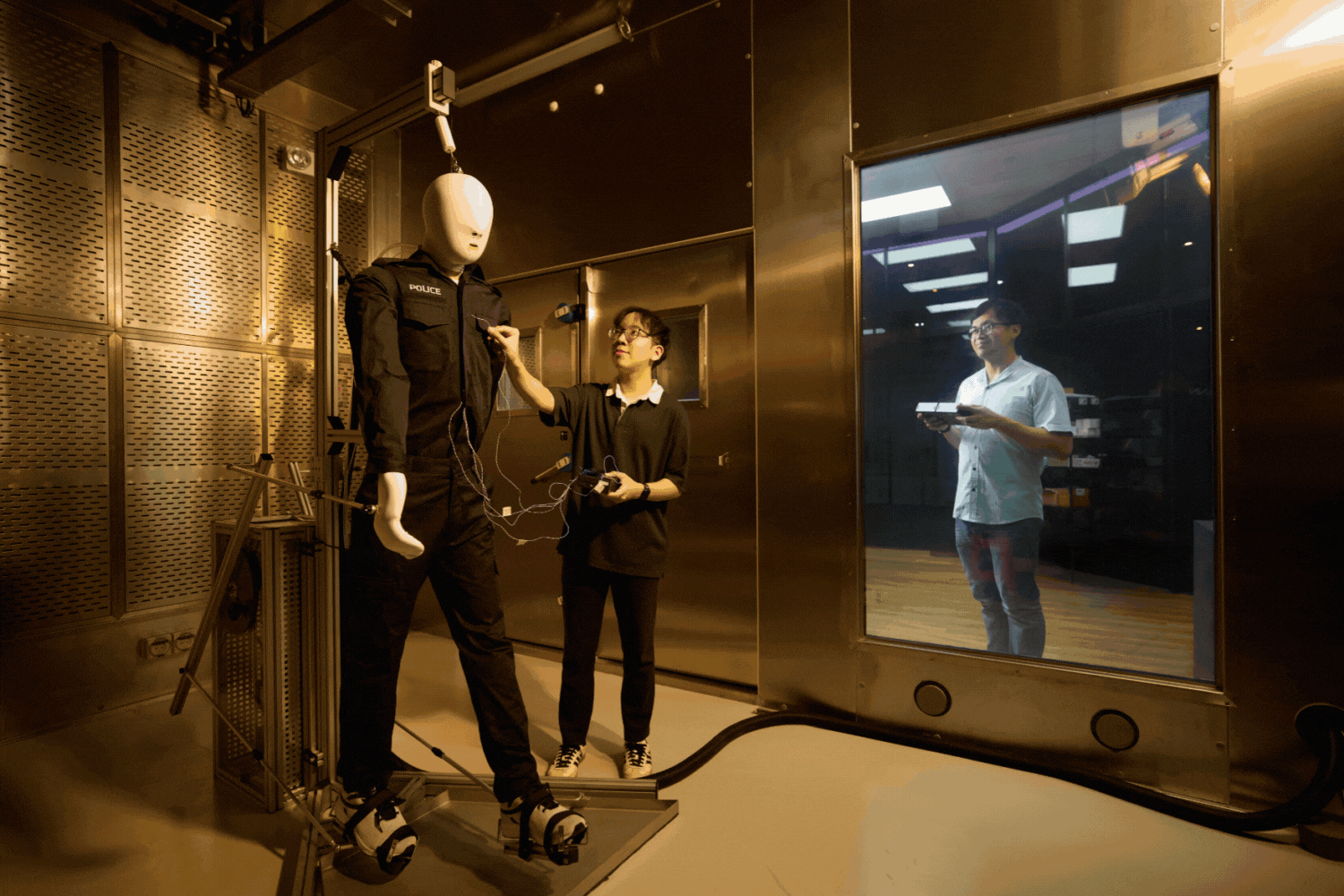 Here’s a peek into the labs of XPLORE. (Photos: HTX)
Here’s a peek into the labs of XPLORE. (Photos: HTX)
HTX has once again pushed the envelope in using science and technology to safely enhance the performance of Home Team officers, this time with the launch of XPLORE (Human Performance ModeLling and SimulatiOn REsearch Facility).
The world’s first human factors and simulation facility dedicated to advancing human performance, resilience, and human-AI collaboration for public safety, XPLORE was officially opened on 7 November 2025 by Minister of State (MOS), Ministry of Home Affairs and Ministry of Social and Family Development Mr Goh Peh Ming.
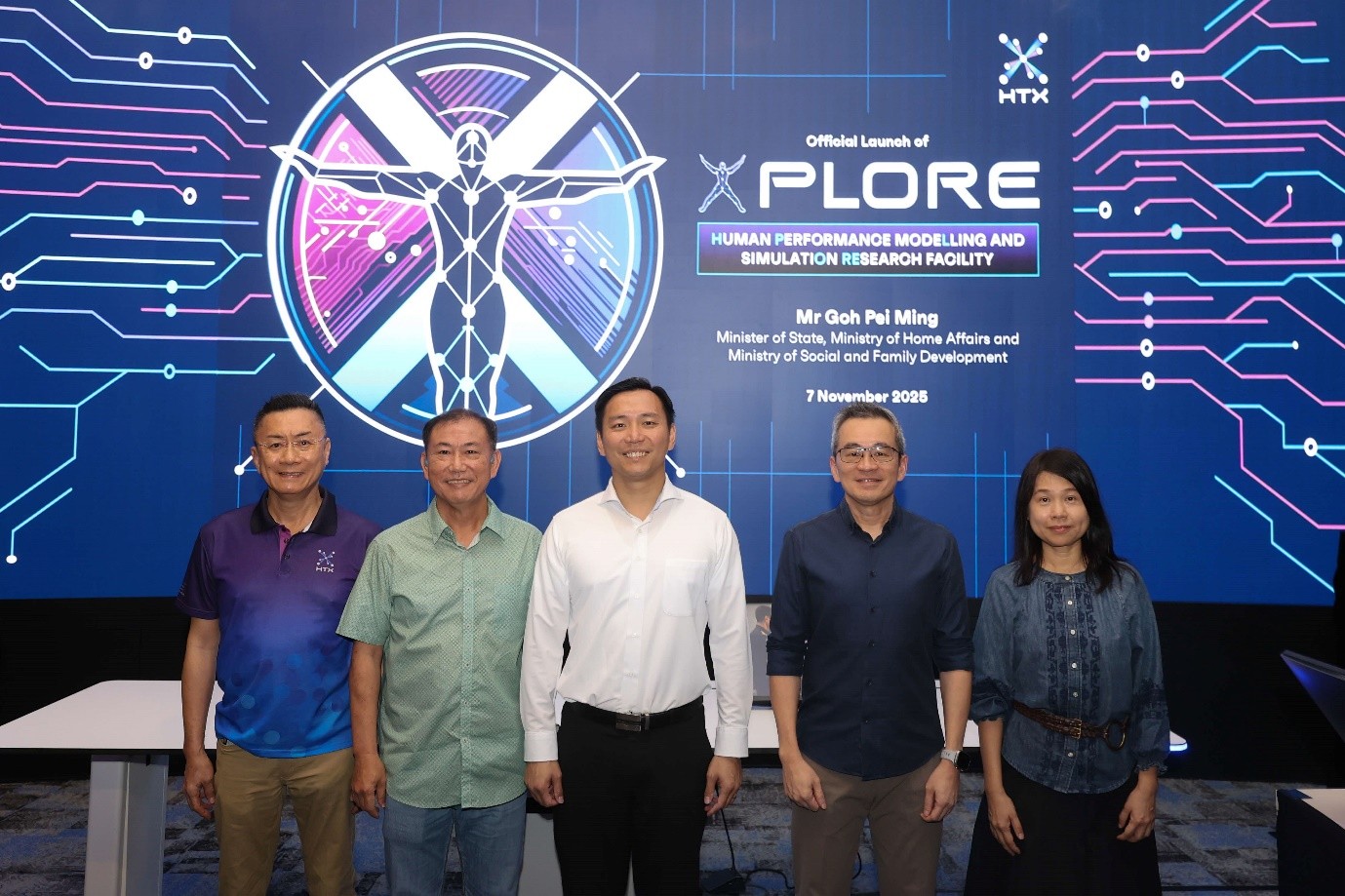 MOS Goh (centre) at the official launch of XPLORE. He is flanked by (left to right) the director of HTX’s Human Factors & Simulation Centre of Expertise Ying Meng Fai, HTX Deputy Chief Executive (Operations) Chen Yeang Tat, HTX Chief Executive Chan Tsan, and HTX Assistant Chief Executive (Science) Lim Chin Chin. (Photo: HTX/Law Yong Wei)
MOS Goh (centre) at the official launch of XPLORE. He is flanked by (left to right) the director of HTX’s Human Factors & Simulation Centre of Expertise Ying Meng Fai, HTX Deputy Chief Executive (Operations) Chen Yeang Tat, HTX Chief Executive Chan Tsan, and HTX Assistant Chief Executive (Science) Lim Chin Chin. (Photo: HTX/Law Yong Wei)
Research at XPLORE is anchored in human biophysical and cognitive sciences – studying how humans think, decide and endure under pressure. Why is this important? Because the Home Team’s frontline operations can be physically and mentally taxing.
“I’m heartened, and very glad to see HTX take the initiative to develop this first-of-its kind facility to ramp up its efforts, to study this field of human factors, and to also develop solutions that are tailored to support our Home Team officers’ unique operating needs,” said MOS Goh at the event.
“I am confident that the systems and the equipment that are developed from this XPLORE facility will help our officers do their jobs more effectively and more safely. And, this is important because people will always be at the core of our Home Team even as, and especially as, more and more technological solutions are being rolled out.”
From multisensory extended reality (XR) environments to physical and digital twins to human-AI teaming, XPLORE comprises seven specialised labs, each focusing on a different area of human modelling and simulation.
Here’s a look at two of these labs:
SensoryX: Decoding the senses
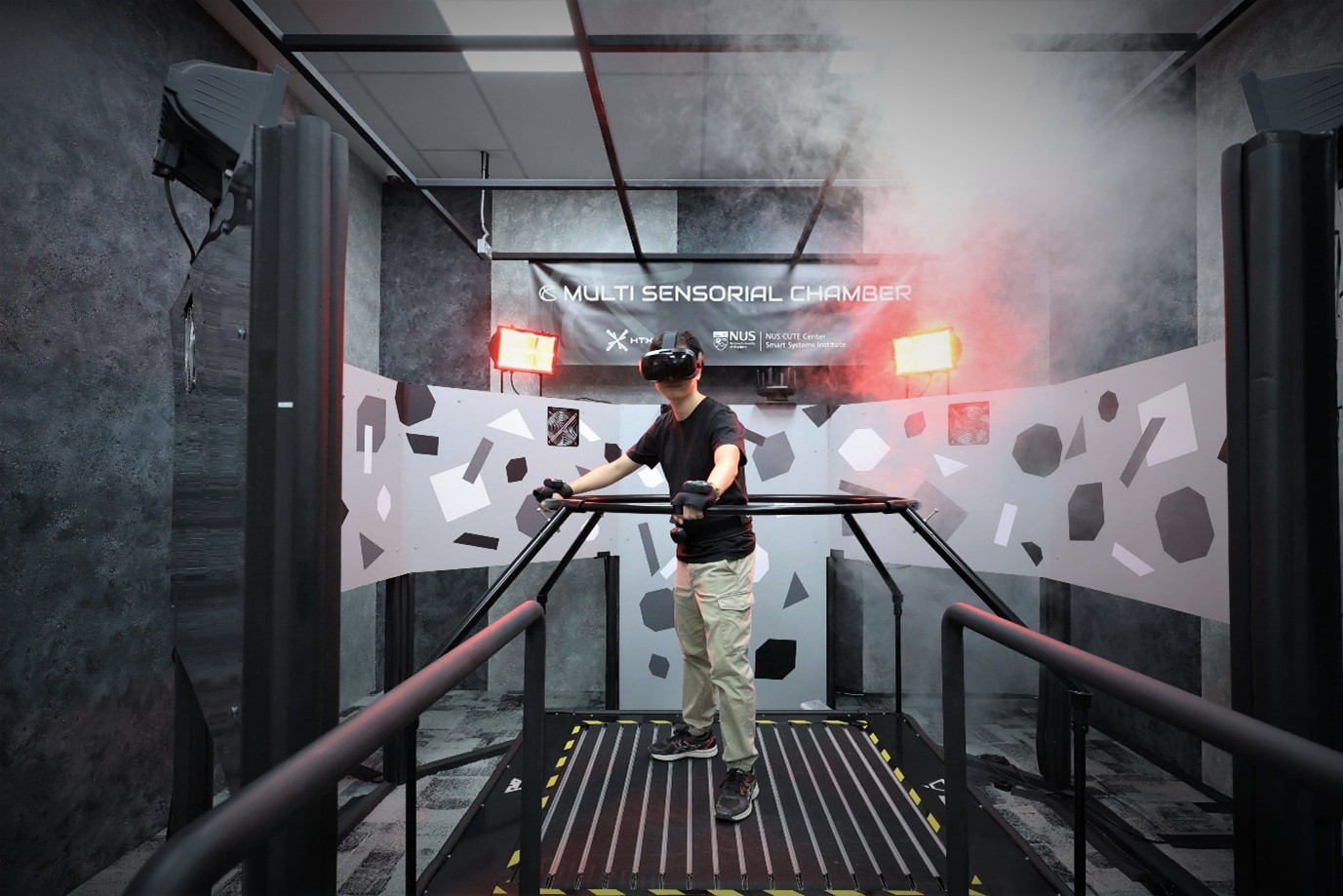 SensoryX, which offers a multisensory virtual reality (VR) environment in which users don a VR headset and walk on a multi-axis treadmill, replicates real-world conditions with heat lamps, directional fans and scent emitters. (Photo: HTX/Alywin Chew)
SensoryX, which offers a multisensory virtual reality (VR) environment in which users don a VR headset and walk on a multi-axis treadmill, replicates real-world conditions with heat lamps, directional fans and scent emitters. (Photo: HTX/Alywin Chew)
Frontline officers often work in dynamic environments rife with multisensory distractions which can hinder operational effectiveness. This chamber aims to accurately reflect that experience so as to make simulation training more realistic.
Unlike traditional VR systems, SensoryX provides more cues than just sight or sound – like touch, temperature, airflow and smell, which are helpful to simulate high-stress situations such as firefighting.
Researchers monitor eye movements, brain activity and heart rate to gauge focus, stress and engagement, and help boost officers’ accuracy, decision making, speed and overall mission performance under sensory overload.
In the pursuit of excellence and safety, we have pushed the boundaries of innovation to create a world-first facility that redefines the landscape of human performance. By harnessing cutting-edge technology and human factors research to model and augment physical and cognitive abilities, we are empowering our public security officers with the tools they need to excel in their critical roles.
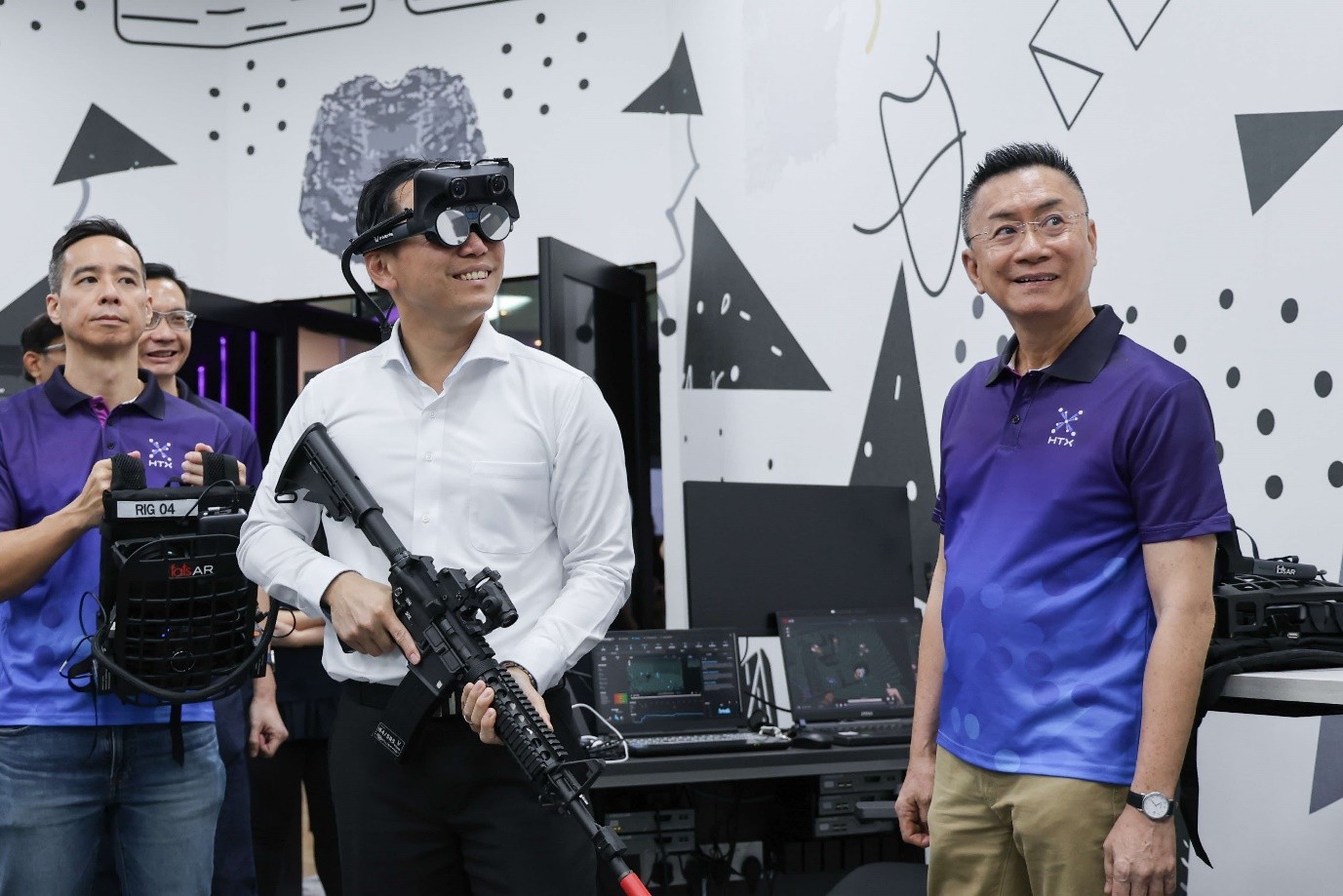 MOS Goh tries out CorteX, a reconfigurable and partitioned mixed reality (MR) tactical firearms simulation arena which allows for an immersive, intelligent and adaptive experience for Close Quarter Battle (CQB) training. (Photo: HTX/Law Yong Wei)
MOS Goh tries out CorteX, a reconfigurable and partitioned mixed reality (MR) tactical firearms simulation arena which allows for an immersive, intelligent and adaptive experience for Close Quarter Battle (CQB) training. (Photo: HTX/Law Yong Wei)
Being involved in a Close Quarter Battle requires officers to make split-second decisions and have strong situational awareness.
Featuring augmented reality (AR) headsets, body sensors and mock firearms that replicate the form, weight and recoil of actual weapons, CorteX allows officers to gather and analyse data such as physiological signals that would improve their individual and team tactical performance.
HTX aims to next develop AI instructors as well as adaptive AI opponents and MR scenarios where enemy behaviour and scenario difficulty can be adjusted in real time to match each trainee’s skill, thus strengthening accuracy, coordination and resilience.
Holistic empowerment
Human performance insights gleaned from the work at XPLORE can also aid in developing intervention strategies and systems such as AI decision-making support, adaptive training, exoskeletons and cooling devices, said Deputy Director, Modeling and Simulation, HFS CoE Dr Saravana Kumarasamy.
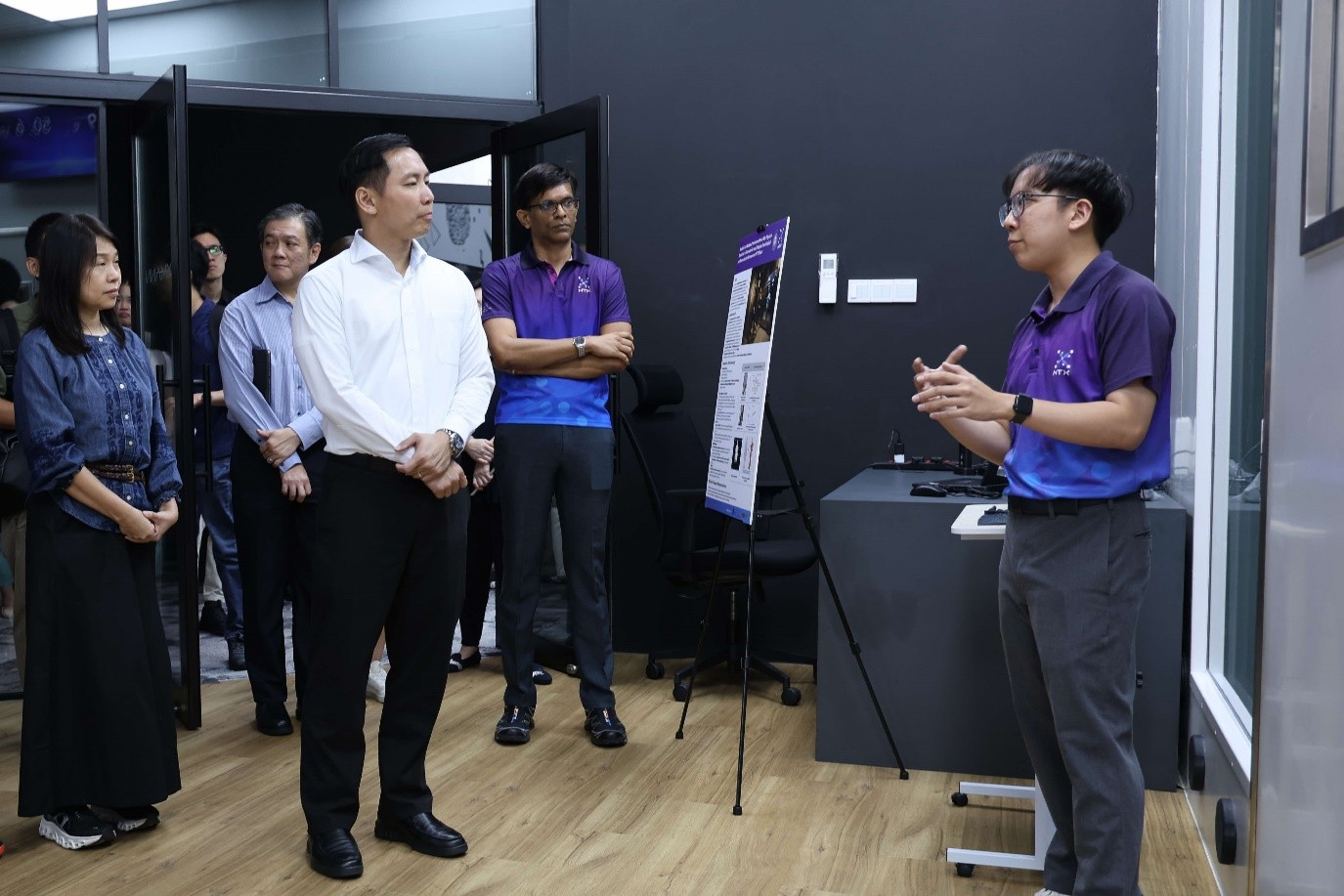 MOS Goh listening to a presentation on the XMann lab, which features a state-of-the art environmental chamber equipped with an instrumented thermal manikin that can simulate temperature, humidity, sunlight and wind. (Photo: HTX/Law Yong Wei)
MOS Goh listening to a presentation on the XMann lab, which features a state-of-the art environmental chamber equipped with an instrumented thermal manikin that can simulate temperature, humidity, sunlight and wind. (Photo: HTX/Law Yong Wei)
“This will translate into safer and more resilient deployments, and smarter and more adaptive training for frontline officers,” he explained.
Dr Saravana also highlighted the close collaboration between HTX and the Home Team Departments in turning the designed solutions into reality, emphasising that it is essential to understand the officers’ pain points before attempting to address any gaps.

